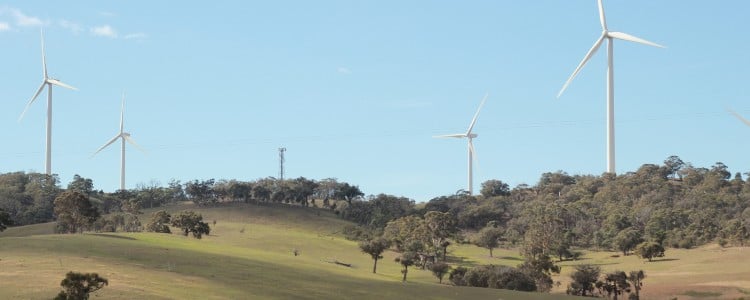The decarbonisation landscape has shifted dramatically over the past few years, reshaping the context in which businesses operate. Many corporates set ambitious decarbonisation targets in the years leading up to 2020; these ranged from operational net zero in 2030, or 100% renewable energy by 2025, to Science Based Targets (SBT) for net zero across all direct and indirect sources of greenhouse gas emissions. Over the course of 2025, amid global geopolitical and economic headwinds, some businesses have walked back their public decarbonisation commitments, preferring to prioritise business growth and cost reductions over achieving their decarbonisation targets.
In Australia, with the commencement of mandatory climate reporting (Australian Sustainability Reporting Standards - ASRS), businesses are working to ensure their transition plans are robust enough to withstand public and auditor scrutiny, and published targets are backed by credible technical and financial analysis. While transition plans and decarbonisation plans are not the same thing, there is a very clear link between the two. Most Australian companies ERM is working with are using their decarbonisation strategies (or net zero plans) as a starting point for the identification of their transition risk mitigation activities for ASRS disclosure. These transition risks and opportunities need to be underpinned by a clear understanding of physical risks, built out through scenarios in order for an ASRS-aligned transition plan to be built.
In response to the seemingly contradictory local and global trends, we’re seeing many Australian clients increasingly request support to refresh and ‘REVAMP’ their decarbonisation strategy.
learn more at ERM REVAMPIn this article we outline some of the major swing factors that have shifted in the last few years, and some key questions organisations are asking to ensure they are positioned to mitigate risks and capture value in an increasingly complex stakeholder and investor landscape.

Key shifts in policy, technology and market – and the questions you should be asking
Regarding policies, Australia has bucked the global trend, introducing numerous new measures to drive decarbonisation. This gives rise to many questions being asked by corporate Australia at present:
- Australian Accounting Standards Board (AASB) S2 will progressively lift the bar on the quality of decarbonisation plans – how does your decarbonisation or net zero strategy fit into your climate transition plan and justify your capital expenditure, will your plan meet audit requirements?
- The Safeguard Mechanism and the emergence of Safeguard Mechanism Credits (SMCs) has spawned a liquid and rapidly growing carbon market – if you’re a Safeguard entity or in a hard to abate sector, how will you manage if carbon prices rise to $60 or $100 per tonne?
- The newly announced Australia’s emissions reduction target of 62-70% signals to the market an intention to stand by a science aligned approach to emissions reduction - With a $5 billion Net Zero Fund to help industrial facilities decarbonise and manufacture green products, how are you positioning your business to access government support and maintain competitive advantage?
- The energy transition has continued at pace, with renewable energy generation doubling in past 5 years. While Australia’s 82% Renewable Energy Target (RET) looks challenging, renewable energy procurement is one of the highest impact actions (and most popular decarbonisation measures) of the 2020’s for major energy users operating in the National Electricity Market (NEM). This continues today, with about 160 corporate Power Purchase Agreements (PPAs) transacted since 2020 (as seen in ERM’s PPA tracker). However, many of these agreements expire over the coming years, as their contract tenure typically aligns with the end of the RET scheme in 2030 - How do you effectively manage energy price volatility and address energy commodity risk?
- As the RET scheme winds down in 2030, and the Renewable Energy Guarantee of Origin (REGO) scheme commences next year, potentially with different quality of renewable energy attributes (e.g. inclusion of pre-baseline generators, geographic and time-matching features) - Is your renewable electricity sourcing strategy rigorous enough to align with the framework you would like to report against and your stakeholder expectations?
- With electrification of fleet and stationary energy systems, electricity volumes will increase and the shape of your load over time may change, potentially negatively interacting with energy contracts - Have you assessed what impact electrification and load shifting will have on your energy contracts?
- Electric Vehicle (EV) uptake in Australia went from just under 1 to 12% of new car sales between 2020 and 20251 but stalled recently with hybrids increasing in popularity. If you’re planning a fleet transition, when should you switch and what charging infrastructure do you need to ensure operational efficiency?
- Hydrogen was the fuel of the future in 2020, but in 2025 the hype has definitely gone, and most projects have been shelved - If hydrogen was a core technology or one of your options in the stack, what is the current state of play and does hydrogen still have a role?
- Investment in renewable fuels has grown significantly in the last 5 years, with mining equipment, shipping, air-transport, and other heavy vehicle reliant organisations trying to shore up a viable source of low emissions fuels. This will create competition for energy sources, crops, and land use, to scale up production, which requires careful attention be paid to the chain of custody and feedstock certification frameworks - Have you got the right partners and certifications to secure a supply of low emissions fuels?
- The rapid expansion of solar at utility scale of the early 2020s has morphed to become the battery energy storage system (BESS) boom of 2025 with market transforming levels of cost reduction and corresponding installation rates. The behind the meter BESS market looks ready to take off spurred by generous rebates announced to support the 2035 target - What strategy should you employ to capture commercial value from the rise of energy storage, and how can it enable your decarbonisation plan whilst improving business resilience?
- Heat pump technology to enable electrification of fossil fuel heating systems has advanced significantly in recent years, but doesn’t offer a drop-in replacement. Feasibility assessments have shown capital costs to be higher than expected and many businesses are re-thinking the timing of replacements - Have you undertaken sufficient planning to optimise heat pump sizing and align replacement with other capital works and infrastructure upgrades to avoid over-spending?
- Australia’s first National Climate Risk Assessment demonstrated that climate change impacts are already being felt nationwide and further inaction will lead to more regular extreme weather events and significant costs to the economy - How can your organisation prepare a commercially sound decarbonisation plan which addresses physical and transition risks? How can quantitative scenario analysis guide strategic decisions regarding the pace and scale of decarbonising your operations?
Why do decarbonisation strategies need to ‘REVAMP’?
Australia's decarbonisation landscape has fundamentally transformed since 2020. What began as a faraway target setting exercise, with peer pressure to raise the bar, has met commercial reality. This has been compounded by evolving regulatory frameworks, energy and carbon market volatility, and rapid technology changes. These shifts are reshaping the Australian economy and businesses’ decarbonisation agendas - creating both risks and opportunities.
To ensure your decarbonisation strategy remains relevant in 2025, it’s critical that it goes beyond high level modelling of opportunities and instead aligns decarbonisation actions with core business value and also connects all business functions to build an effective implementation program.
Rather than delaying action, or watering down commitments, companies should focus on developing a credible strategy that directly aligns decarbonisation actions with risk drivers – and considers the full range of commercial value from these actions, to help secure funding and derisk capital investment.
How ERM can help?
At ERM, we’re helping clients navigate this dynamic environment by revisiting and refreshing decarbonisation plans and strategies. Our REVAMP approach ensures your strategy meets regulatory requirements while also unlocking operational savings, increasing resilience and delivering business value. Lean more at our REVAMP page or contact the article authors.
 View all
View all 


